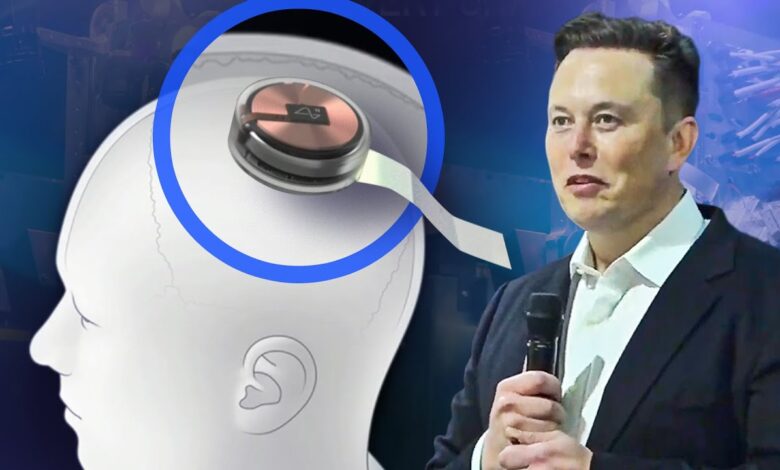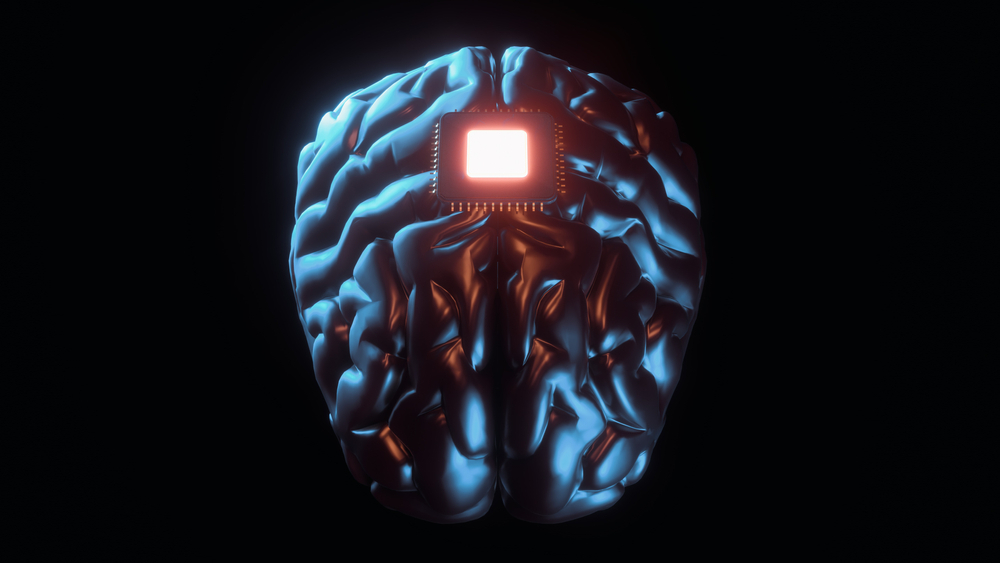Brain-computer chip company started by Elon Musk

Brain-computer chip company started by Elon Musk
Brain-Computer chips: A federal investigation has targeted Elon Musk’s Neuralink company for its animal experimentation program, Reuters reported on Monday. Neuralink is developing a brain chip that enables the blind to see and the paralyzed to walk.
What are they building?
Musk and a team of engineers launched Neuralink in 2016, which is designing brain chips that will soon be able to implant in the skull, allowing disabled users to communicate and move again.
Neuralink’s device uses a chip to process and transmit neural signals that could be received by computers or mobile devices.
By controlling a mouse, keyboard, or other computer functions with their thoughts, a person could potentially control a computer.
Musk said in April 2021 that the first Neurolink product would allow paralyzed individuals to use smartphones quicker than those who use thumbs.
As well as restoring neural activity inside the body, Neuralink believes its device can allow spinal cord injury patients to move their limbs in the future. In addition to curing neurological diseases such as Alzheimer’s and dementia, the San Francisco and Austin-based company is working on other projects.

HOW HAS NEURALINK PROGRESSED?
In 2021, Neuralink showed a video showing a macaque playing a simple video game after being implanted with a brain chip after being implanted with a neural link chip. This week, the company presented a webcast showcasing the chip’s improved speed and capabilities.
In contrast to rival Synchron, which has less ambitious goals for its medical advances, Neolink has yet to secure U.S. regulatory approval to begin human trials. In January, Neuralink submitted its application to the Food and Drug Administration to begin human trials despite Musk’s public announcement that the company would miss his deadlines. Last week, Musk stated that Neuralink’s clinical trials can begin in six months.
In addition to Tesla and SpaceX, billionaire Elon Musk has some unusual ventures as well. Among them, he says, he was working on an AI-brain symbiosis.
Musk founded Neuralink to develop neural interface technologies. It involves creating technology that can both record and stimulate a person’s brain activity.
Though Musk talks about merging human consciousness with artificial intelligence in his futuristic vision of the technology, the technology has many potential near-term medical applications. One such application is the treatment of Parkinson’s disease.
A quiet start-up, Neuralink was formed in 2016. Neuralink’s near-term applications have been emphasized by Musk, but he frequently associates it with the company’s fears regarding artificial intelligence. Through “symbiosis with artificial intelligence,” Musk believes humanity will achieve “symbiosis with artificial intelligence”
It’s “designed to address the existential risks associated with digital superintelligence,” Musk told podcast host Lex Fridman in 2019.
Musk concluded, “If you can’t beat ’em, join ’em,” adding that we will never be smarter than a digital supercomputer.
A lot of fanciful claims have been made by Musk about Neuralink’s enhanced abilities. Tesla CEO Elon Musk said people would be able to telepathically summon their cars in 2020 by saving and replaying memories, similar to what you see on “Black Mirror.”
This claim has been disputed by experts.
Professor Andrew Jackson of Newcastle University was interviewed by Insider in September 2020. I don’t mean to say that this won’t happen, but I do believe that the neuroscience behind it is uncertain. Although we have much less knowledge about how those processes work in the brain, Prof. Andrew Jackson emphasized that predicting a pig’s leg position when it walks on a treadmill does not mean that you can automatically read thoughts.
According to Andrew Hires, another professor, Musk’s claims about merging AI and human capabilities are “aspirational fantasy.”
Neuralink is developing two bits of equipment. An implantable chip with electrodes that fan out into the skull would be the first type
Neuralink’s near-term applications have been emphasized by Musk, but he frequently associates it with the company’s fears regarding artificial intelligence. Through “symbiosis with artificial intelligence,” Musk believes humanity will achieve “symbiosis with artificial intelligence”
It’s “designed to address the existential risks associated with digital superintelligence,” Musk told podcast host Lex Fridman in 2019.
Musk concluded, “If you can’t beat ’em, join ’em,” adding that we will never be smarter than a digital supercomputer.
A lot of fanciful claims have been made by Musk about Neuralink’s enhanced abilities. Tesla CEO Elon Musk said people would be able to telepathically summon their cars in 2020 by saving and replaying memories, similar to what you see on “Black Mirror.”
This claim has been disputed by experts.
Professor Andrew Jackson of Newcastle University was interviewed by Insider in September 2020. I don’t mean to say that this won’t happen, but I do believe that the neuroscience behind it is uncertain. Although we have much less knowledge about how those processes work in the brain, Prof. Andrew Jackson emphasized that predicting a pig’s leg position when it walks on a treadmill does not mean that you can automatically read thoughts.
According to Andrew Hires, another professor, Musk’s claims about merging AI and human capabilities are “aspirational fantasy.”
Two pieces of equipment are being developed by Neuralink. An implantable chip with electrodes that fan out into the brain would be implanted in a person’s skull.
In the future, Neuralink’s chip will be implanted in patients’ skulls about the size of a coin. In the brain, wires extending from the chip are approximately 20 times thinner than human hair.
In theory, the wires could electrically stimulate the brain as well as monitor brain activity. A wireless chip transmits all of this data to a computer so that researchers can study it.
Another possibility is to implant the chip automatically using a robot.
A Neuralink chip would send flexible wires to the human brain via a stiff needle, a bit like sewing machines.
The robot was showcased in a video released by Neurolink in January 2021.
Musk claims that Neuralink electrodes can be implanted using the machine as easily as LASIK eye surgery. The machine has some promising features, according to neuroscientists previously quoted by Insider in 2019.
As a patient’s brain moves during surgery along with breathing and heartbeat, Professor Andrew Hires discussed a feature that would automatically adjust the needle to compensate.
As it stands now, the robot measures 8 feet high, and its design was handled by Woke Studios, who are developing Neuralink’s underlying technology.

In the US, Musk’s neural link is in the crosshairs for allegedly causing animal suffering and death
Brain implants are being developed by Neuralink in the hope of helping paralyzed people walk again and cure other neurological conditions.
According to documents reviewed by Reuters and sources familiar with the investigation and company operations, Elon Musk’s medical device company Neuralink is being investigated for potential animal welfare violations. Employees have complained that animal testing is rushing, causing needless suffering and deaths, and the company is under investigation for possible animal welfare violations.
As part of Neuralink’s effort to enable paralyzed people to walk again and cure other neurological conditions, the company is developing a brain implant.
According to two sources with knowledge of the investigation, the US Department of Agriculture’s Inspector General opened the investigation at the request of a federal prosecutor in recent months.
Sources said that the probe is focused on violations of the Animal Welfare Act, which governs how some animals are treated and tested by researchers.
There has been growing employee dissatisfaction about Neuralink’s animal testing, and Reuters has reviewed dozens of Neuralink documents and interviewed more than 20 current and former employees to find out whether pressure from CEO Musk to accelerate development has caused botched experiments. Employees report repeating failed tests, resulting in the killing of more animals.
There are previously unreported messages, emails, audio recordings, presentations, and reports included in the company documents. No comment was received from Musk or other Neuralink executives.
Reuters has reviewed company records and spoken with sources with direct knowledge of its animal-testing operations, which show that the company has killed about 1,500 animals since 2018. This includes 280 sheep, pigs, and monkeys. Sources said the number of animals tested and killed is an estimate, as the company does not keep precise records. Rats and mice have also been used in Neuralink’s research.

Neuralink may be violating regulations or standard research practices despite the total number of animal deaths. As a result of Musk’s demands to speed up research, current and former Neuralink employees say there are more animal deaths than needed.
Human errors marred four recent experiments involving 86 pigs and two monkeys Reuters uncovered through company discussions, documents, and employee interviews. Three current and former staff members said mistakes undermined the experiments’ value and led to them being repeated, resulting in the deaths of more animals.




